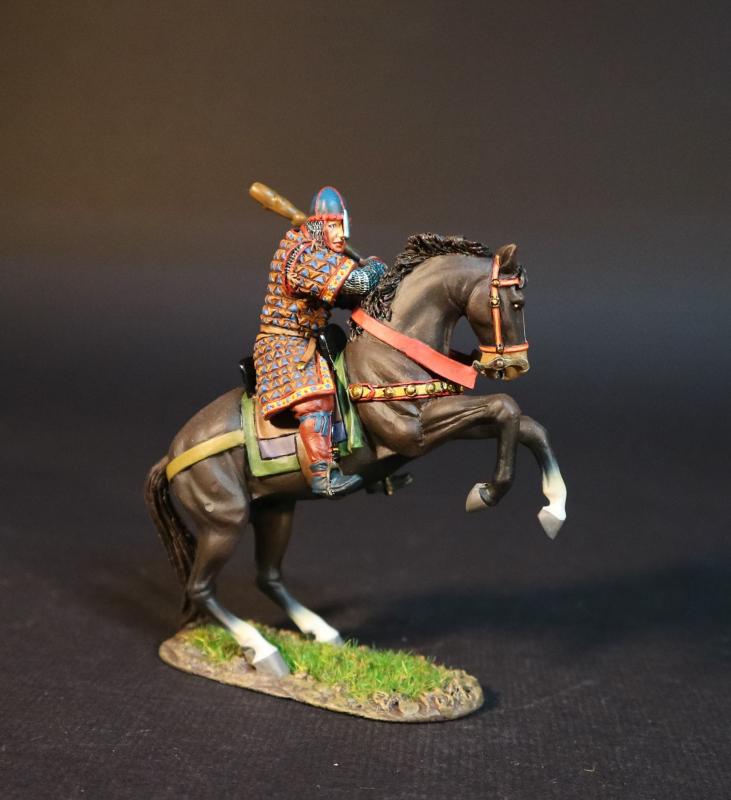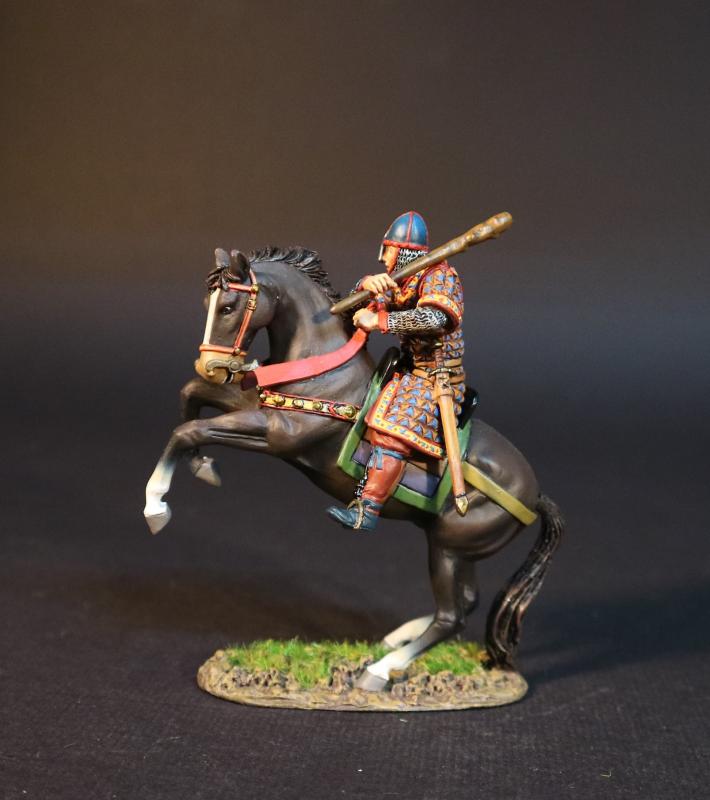Bishop Odo of Bayeux, The Norman Army, The Age of Arthur--single figure holding club mounted on rearing horse
$108.00
Item Number: NM-12
Bishop Odo of Bayeux, The Norman Army, The Age of Arthur--single figure holding club mounted on rearing horse
THE AGE OF ARTHUR
THE BATTLE OF HASTINGS 1066
THE NORMAN ARMY
The Battle of Hastings took place on the 14th October 1066. Although the numbers on each side were about equal, William had the advantage of having both cavalry, infantry, and many archers. Harold had only foot soldiers, and few archers. The English formed a shield wall along a ridge, and were initially so effective that the invading Norman army was repeatedly thrown back with heavy casualties.
BISHOP ODO OF BAYEUX
Odo was the son of William the Conqueror’s mother Herleva and Herluin de Conteville. There is uncertainty about his birth date, and it is believed he was born around 1035. Duke William made him bishop of Bayeux in 1049.
Although Odo was an ordained Christian cleric, he is best known as a warrior and statesman. He funded ships for the Norman invasion of England and is one of the very few proven companions of William the Conqueror known to have fought at the Battle of Hastings in 1066.
The Bayeux Tapestry, which was probably commissioned by him to adorn his own cathedral, appears to make the point that he did not actually fight--that is to say shed blood--but rather encouraged the troops from the rear.
The Latin annotation embroidered onto the Tapestry above his image reads, “Hic Odo Eps Baculu Tenens Conortat Pueros”, “Here Odo the Bishop holding a club strengthens the boys”.
It has been suggested that his clerical status forbade him from using a sword, although this is doubtful. The club was a common weapon and used often by leaders including the Duke William himself, as also depicted in the same part of the Tapestry.
In 1067, Odo became Earl of Kent, and, for some years, he was a trusted royal minister. On some occasions when William was absent (back in Normandy), he served as regent of England, and at times he led the royal forces against rebellions (eg, the Revolt of the Earls).
During this time, Odo acquired vast estates in England, larger in extent than anyone except the king. He had land in twenty three counties, primarily in the south east and in East Anglia.
Released in DECEMBER 2023.

